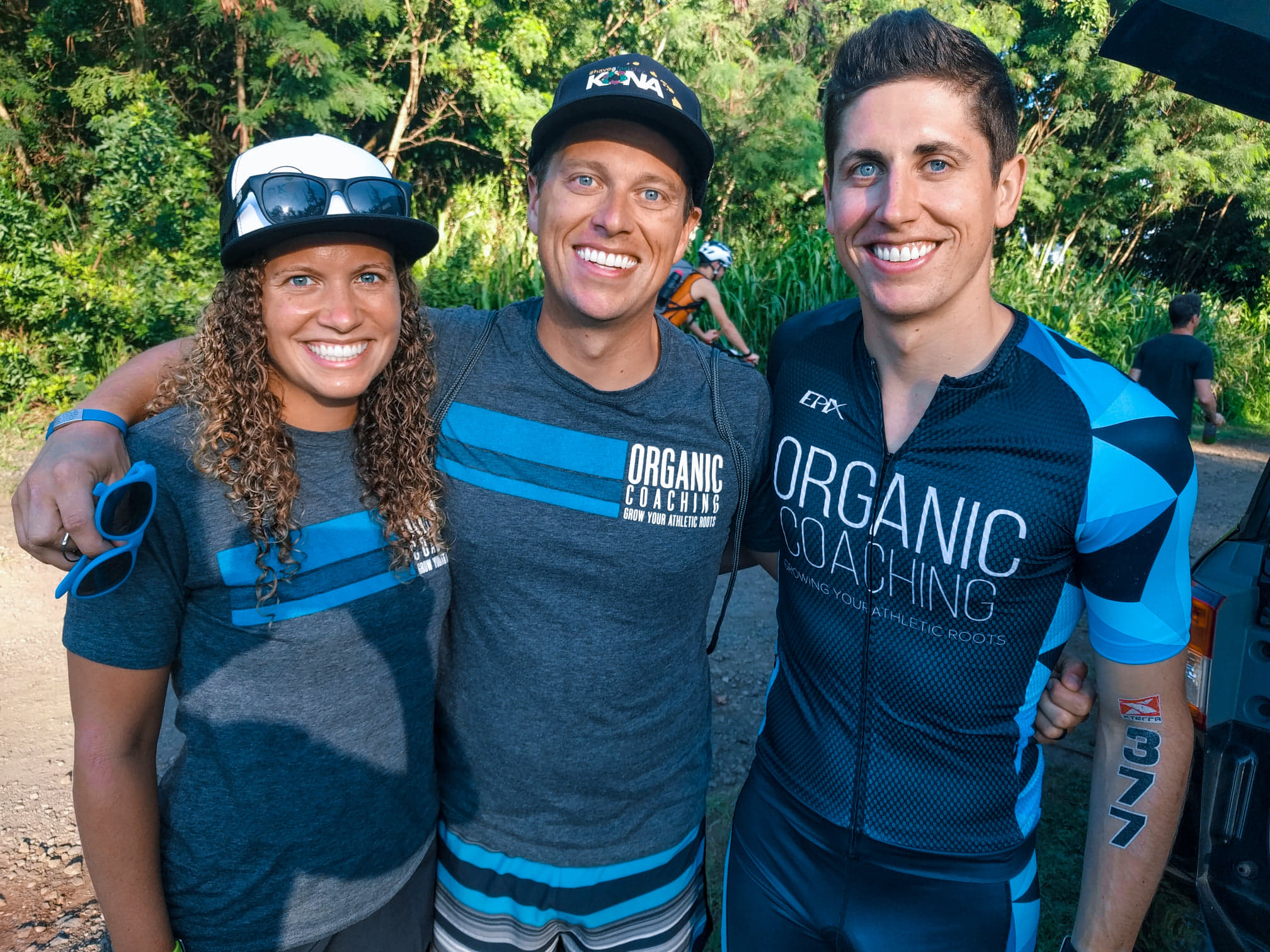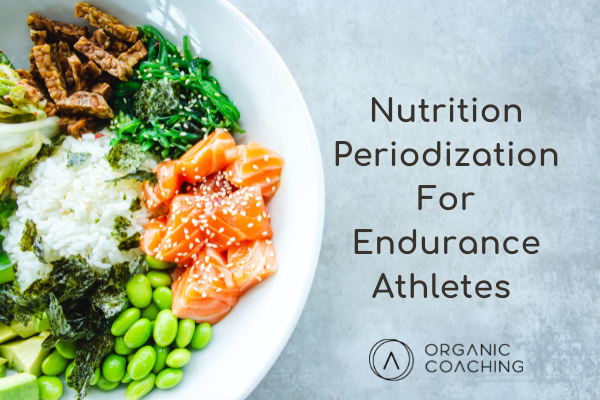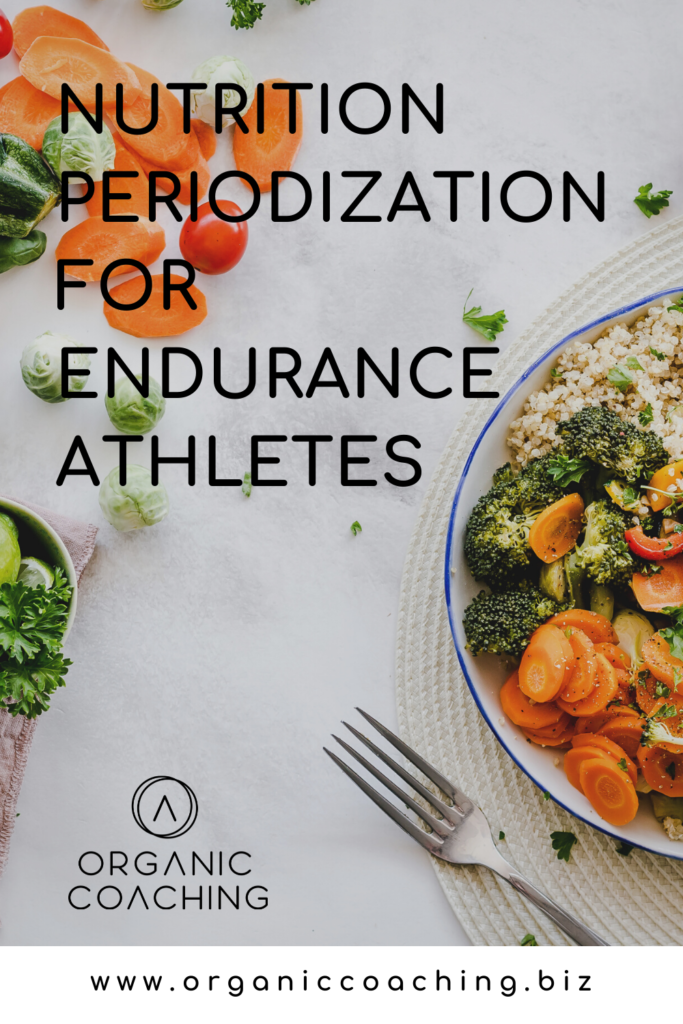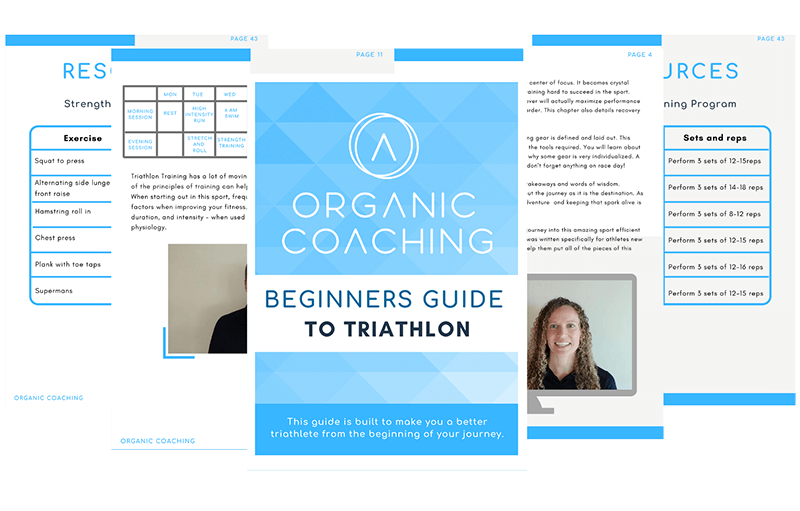

The concept of nutrition periodization has been a long-practiced tool to optimize training adaptations, improve recovery, and enhance performance.
This is a practice where you change your nutrition based on the training you are doing. This is very different from the way most of us traditionally eat. We are creatures of habit eating the same thing day to day. Maybe with a few minor changes. However, we change our training plans throughout the year – base phase training, to building, to competition, and to transition. So, why does our nutrition not also change?
As training load changes, the body’s need for nutrients changes. During the off-season, your needs will be much different than that during a competition phase. Some athletes will change their phase of training up to four times within a year- base, build, competition and transition. Additionally, their training days will vary within that training phase from hard days to recovery days. There will be phases of building weeks to taper weeks. With that being said, there are constant changes in energy demands based on the training day to day. Nutrition periodization allows for the body to get the nutrients it needs on any given day so you are able to see optimal training adaptations, maintain a strong immune system, and reach performance goals faster.
Usually, training phases follow a base phase, building phase, competition phase, and transition phase. Based on these goals, you can match nutrition goals that will help you reach your physical goals.
| Physical Goals | Nutrition Goals | Nutrition Training Methods Used |
| Base phase | ||
| Build aerobic endurance Increase strength and mobility Body composition <75% maximum heart rate | Focus on daily nutrition and hydration plan Improve metabolic efficiency (fat loss) Increase antioxidant-rich foods | Training low – Train 2x/day with low carbohydrate intake between the two sessions – Train faster – Limit exogenous carbohydrates during workouts – Limit carbohydrate availability in recovery |
| Build Phase | ||
| Focus on power output Increase training intensity and volume Introduction of speed work | Increase overall energy intake Sandwich high-intensity workouts with carbohydrate Experiment with during race fueling and hydration techniques continue with antioxidant-rich foods Recovery with timely carb and protein intake | Train high – High carb intake before training and post-training – High daily carb intake with increased carb intake around training – Train gastric emptying for improved digestion of fluids and food to decrease gut discomfort |
| Competition Phase | ||
| Continued increase intensity and volume Addition of more tempo and speed work based on ideal race pace | Remain at high energy intake Emphasize pre and post-workout fueling and hydration techniques High antioxidant-rich foods Understand during race fueling and hydration | Training race day nutrition Training absorption of carbohydrate burning exercise to improve the capacity of the gut/ decrease gut discomfort Train gastric emptying for improved digestion of fluids and food to decrease gut discomfort |
| Transition Phase | ||
| Cross training Find alternate workouts for enjoyment Body composition | Decrease energy intake | Balanced nutrition plan including a variety of foods from all food groups Mindful eating |
If you are in your base phase of training and/or doing a workout at <75% max heart rate, then you need minimal carbohydrates here to fuel your workout. Train the body to be efficient at burning fat for fuel instead. Training fasted here is not recommended, rather consume 10-15 grams of protein with minimal fat and carbohydrate to prevent muscle breakdown and maintain healthy hormones.
During those higher intensity intervals and threshold sessions in the build and competition phases, carbohydrates are NEEDED to fuel the muscles in improving maximum VO2 and your threshold. This is where you sandwich your workouts with carbohydrates so you can maintain a high output from beginning to end as well as replenish those stores in the post-workout meal.
Carbohydrate manipulation during phases of training. Research DOES NOT support a low carbohydrate, high-fat diet long-term for endurance athletes. Carbohydrates are the primary source of fuel during the build and competition phases of training when heart rate is high and energy demands are increased. When the heart rate is <75% maximum heart rate is when you can train on low carbohydrates and focus on body composition. This will be during your base and transition phases.
Protein needs are increased during the build and competition phases to meet increased muscle breakdown, support recovery, and promote healthy hormone function.
Fat intake should not drop below 20-35% of total intake. It is recommended to minimize fat intake before a workout to prevent stomach discomfort as well as to improve digestion. Fats take much longer to digest in the body than carbohydrates and protein.
Research does support nutrition periodization for optimal muscle training adaptations and recovery; however, this research is still in its infancy. When considering changing your nutrition to match your training, be mindful of your specific goals, your fitness level, and how your body is tolerating the changes. Just as with all nutrition plans, there is not a one size fits all approach to nutrition periodization. Meaning, that what works for one person is not necessarily going to work for the next.
This is best done with a coach or registered dietitian to measure your performance and health outcomes as you integrate changes in your training and nutrition.

References:
Jeukendrup, AE (2017). Periodized Nutrition for Athletes. Sports Medicine. 47 (suppl 1): 51-63. doi: 10.1007/s40279-017-0694-2.
Impey, SG., Hammond, KM., Shepherd, SO., Sharles, AP., Stewart, C., Limb, M., et al (2016). Fuel for the work required: A practical approach to amalgamating train-low paradigms for endurance athletes. Physiological Reports. 4(10): e12803. doi: 10.14814/phy2.12803.

Carly and Tyler Guggemos built Organic Coaching in 2014 with a simple philosophy that works. The idea is to take what you have and grow it to get faster, fitter and stronger. And to do it with the time you have – not the time you wish you had.

For athletes who are ready to take their training to the next level while still thriving and succeeding in their professional and family life.
Copyright © 2024 Organic Coaching LLC